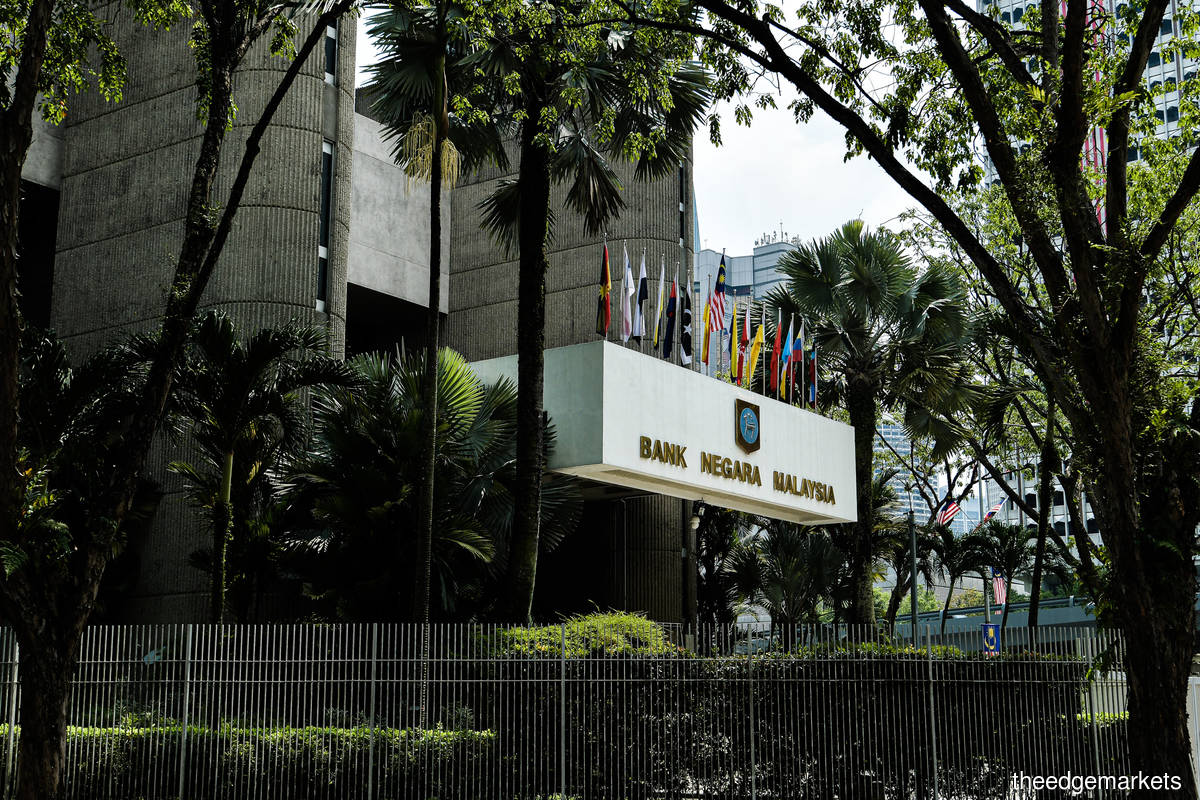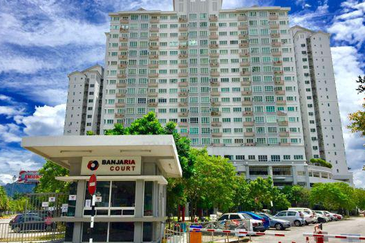
- The majority of economists now bet that the OPR, which has normalised to pre-pandemic levels, will be maintained for the remaining three monetary policy meetings in 2023, scheduled in July, September and November.
KUALA LUMPUR (May 3): Economists positively viewed Bank Negara Malaysia's (BNM) surprise hike in the overnight policy rate (OPR) by 25 basis points to 3% on Wednesday (May 3), as they considered the move an indication of the domestic economy's resilience.
The majority of economists now bet that the OPR, which has normalised to pre-pandemic levels, will be maintained for the remaining three monetary policy meetings in 2023, scheduled in July, September and November.
Bank Muamalat Malaysia Bhd chief economist Dr Mohd Afzanizam Abdul Rashid said the OPR hike is a “done deal” at 3%, based on the OPR ranging between 3% to 3.25% from 2011 to 2019.
Afzanizam told The Edge that at 3%, BNM has policy space should there be a need to respond when economic prospects become increasingly challenging going forward.
He said it will also reward those who want to save more as deposit rates will be kept high, while discouraging excessive build up in debt as cost of borrowings also becomes more expensive.
At the time of writing, several banks in the country have announced their new lending rates, in line with the revised OPR.
Rakuten Trade head of equity sales Vincent Lau received news of the rate hike positively, as it showed that the Malaysia economy is resilient.
He added that banking stocks will benefit from the announcement.
Maybank Investment's analyst Desmond Ch'ng said the normalisation of the OPR is positive for banks in mitigating the net interest margin (NIM) pressure, especially in the first quarter of 2023.
“Anecdotal evidence suggests that NIM pressure had eased somewhat in April and will hopefully continue to ease,” Ch’ng said.
Meanwhile, MIDF Research opined that BNM is seizing the opportunity to restore its monetary bullets to pre-pandemic levels as domestic economic figures still indicate strong and sound performances. It predicted that the central bank will shift to a wait-and-see approach as it monitors developments by central banks of key economies worldwide.
If Malaysia’s domestic economy were to improve better than expected, MIDF predicted that BNM will optimise its monetary arms by normalising its statutory reserve requirement (SRR) to 3% this year. In March 2020, the SRR rate was reduced to 2%.
On the performance of the Malaysian ringgit, MIDF said the ringgit is fundamentally in a good position as the domestic economy stays on upbeat momentum. It said Malaysia, as a net exporter of crude petroleum, liquefied natural gas and palm oil, stands to benefit from the elevated global commodity prices.
“Once the US Federal Reserve hits the pause button, we are optimistic that the ringgit will appreciate faster. We keep our USD/MYR forecast to average at RM4.20 per US$1 and [end] the year 2023 at RM4,” MIDF said.
The ringgit strengthened against the US dollar slightly to 4.4552 from 4.4640 on Wednesday following the latest OPR adjustment, although it is still far off from its January strength of 4.2345 against the greenback.
However, OCBC Treasury Research highlighted that BNM’s vigilance on financial imbalances and sticky core inflation signalled that it has not closed the door on further rate hikes. Nonetheless, it said the firm’s base case is for BNM to hold the policy rate for the rest of 2023.
“The recent mix of weakening external data and easing inflation had suggested to us that BNM would not be inclined to hike further,” OCBC Treasury Research said.
Capital Economics’ emerging Asia economist Shivaan Tandon expected the OPR rate hike on Wednesday to mark an end to the tightening cycle, with inflation set to fall back further and the economy likely to struggle over the coming months.
He said the firm thinks BNM is "too optimistic" about the economic outlook as BNM’s hopes on the rebound in tourism and higher infrastructure spending are likely to be “offset by drags from elsewhere”.
“Household and corporate debt ratios in Malaysia are among the highest in the region, making the economy especially vulnerable to high interest rates,” Shivaan said.
“Malaysia is also heavily exposed to weak external demand and particularly to the ongoing downturn in the global electronics sector, [with the] electronics account for Malaysia’s largest goods exports.”
Meanwhile, RHB Research economists Chin Yee Sian and Wong Xian Yong said they maintained their forecast that the OPR could be raised by a maximum of 25 basis points to 3.25% this year, although it is more likely to be kept at 3%, in line with the consensus among economists surveyed by Bloomberg.
“We expect 1Q2023 GDP to print 4.2% year-on-year. Domestic demand will remain robust on [the] back of resiliency in consumer spending and services sector activities. Meanwhile, export growth and manufacturing sector would be the soft spots, in tandem with a more subdued global trade activity.
“We maintain our 2023 GDP growth forecast at 5.0% year-on-year versus the Bloomberg consensus estimate of 4.0% year-on-year and the BNM forecast of 4.0%- 5.0% Despite the slowdown in external demand, we think that the risks on the economic growth itself is limited,” they said in a note on Wednesday.
TOP PICKS BY EDGEPROP

Taman Sri Pelabuhan @ Klang
Port Klang, Selangor

Taman Tun Dr Ismail (TTDI)
Taman Tun Dr Ismail, Kuala Lumpur

Happy Garden (Taman Gembira)
Kuchai Lama, Kuala Lumpur

Bukit Jalil, 2.5 Storey house (end lot), Taman Jalil Sutera, Kuala Lumpur
Bukit Jalil, Kuala Lumpur

Pearl Villa Townhouse
Bandar Saujana Putra, Selangor

Bukit Beruntung Industrial Park
Rawang, Selangor

hero.jpg?GPem8xdIFjEDnmfAHjnS.4wbzvW8BrWw)

















